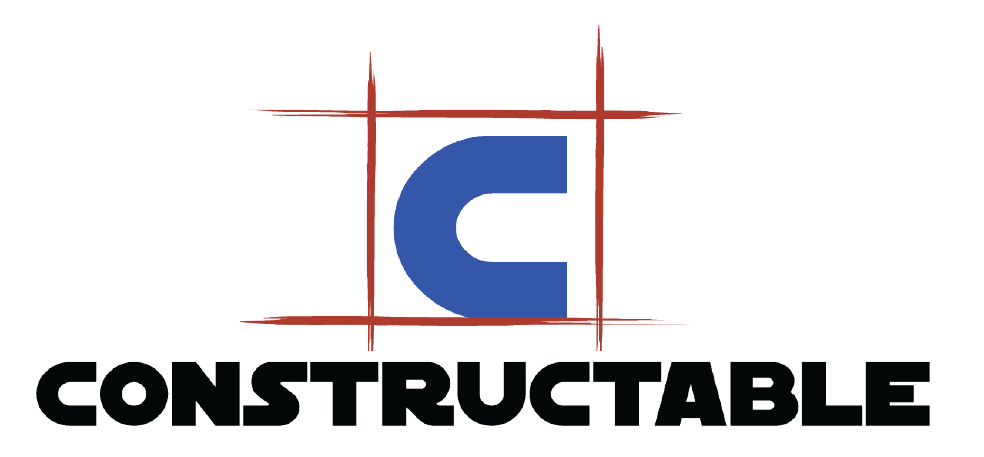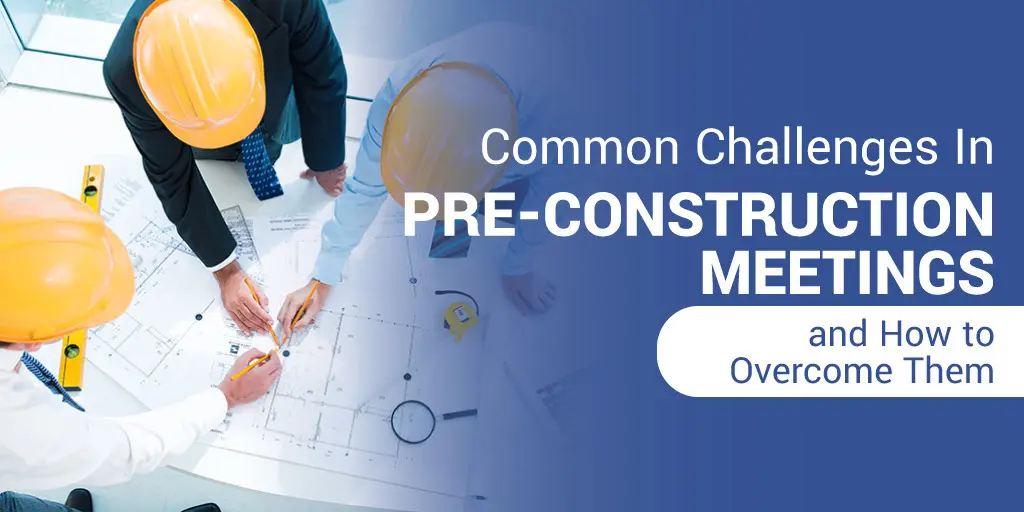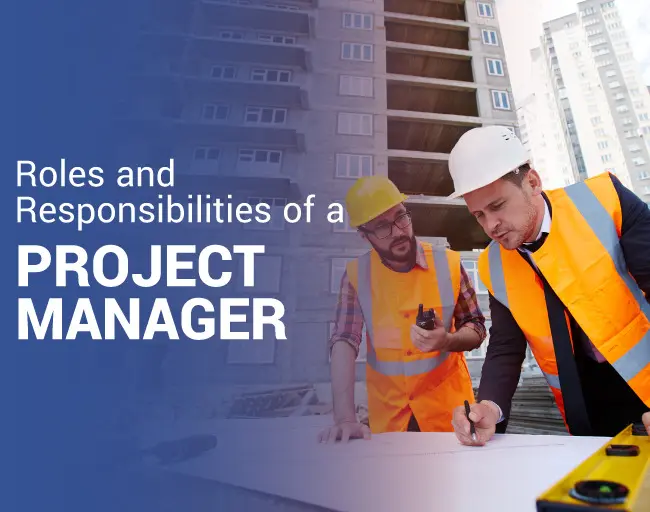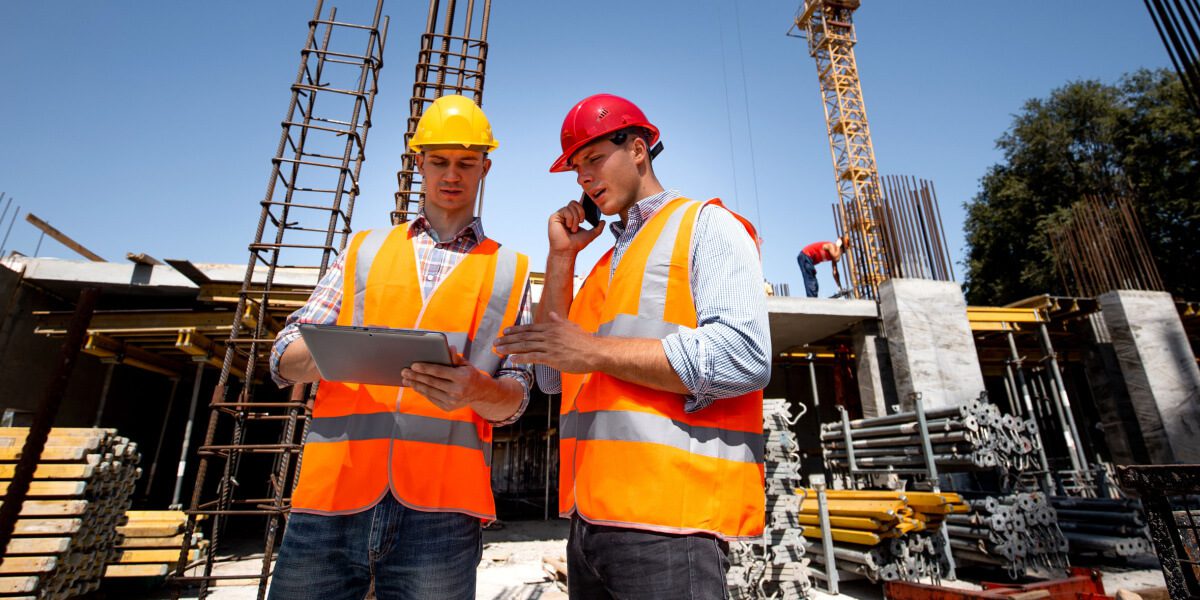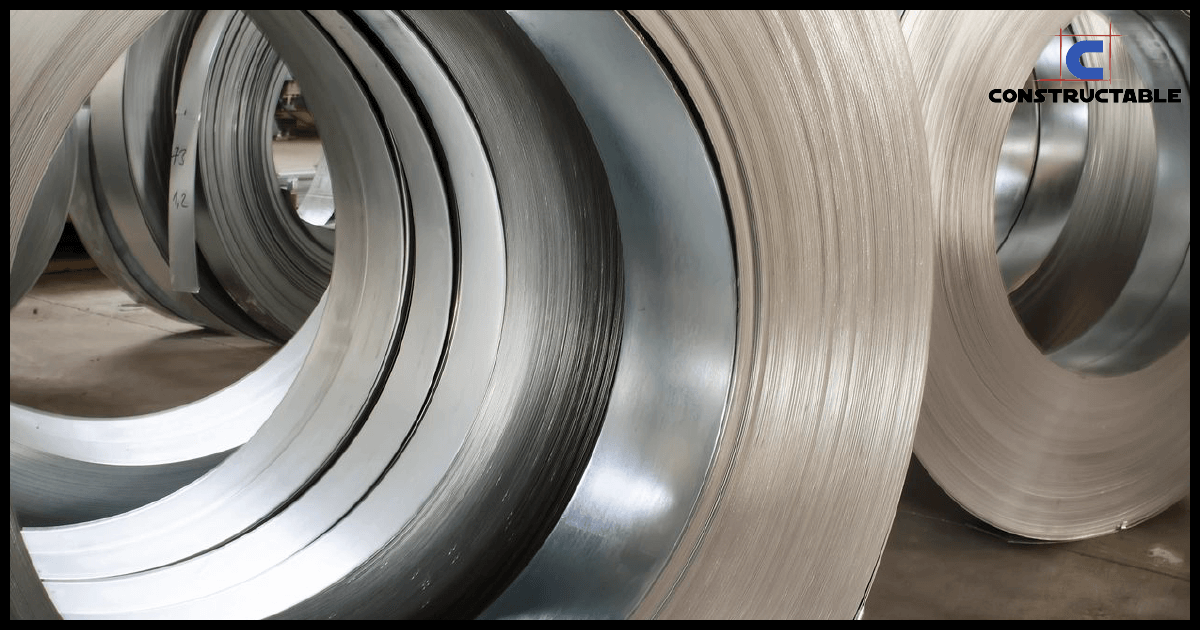
The Perfect Storm: The High Price of Steel in Construction
“I aimed for the public’s heart, and… hit it in the stomach.” —Upton Sinclair, Author of The Jungle
“He who controls the past controls the future.” —George Orwell, 1984
Steel prices are at an all time high.
The powerful concoction that is driving steel prices up to record levels is a combination of global sluggishness in labor, materials, and transport; political jockeying and drama; future uncertainty; the long shadow of COVID-19; wholesale societal change; and fierce industrial ramp up after idling so long. It is a perfect storm that cannot last. Whatever happens in the future to American society, the resident of 1600 Pennsylvania Street, public health from COVID-19, steel prices will not remain like this forever. We, in the Construction industry, are simply in for a wild ride until then.
With Trump-era steel tariffs doing their job nicely (for better or for worse depending on your perspective and pocketbook), global pandemic economic and supply line challenges, work stoppages, worker shortages, chaos in Afghanistan, and a general pandemic mindset, the construction industry is at a critical juncture. Other than to keep raising prices as everyone else does (and thus drive away business), how can a construction company thrive—or even simply survive—our COVID-19 brave new world?
TL/DR: Why are steel prices so high?
1. Trump-era tariffs worked like a charm
2. COVID-19
a. Business shutdowns
b. Workforce layoffs
c. Reluctance to return to work
d. “Hiding” from COVID-19
3. Industrial ramp up
4. Slow global trade lines
5. Fierce competition for transportation, vehicles, workforce, and materials.
6. Renewed vigor and chance-of-a-lifetime sales for the steel industry
7. High demand (from industrial ramp up and Trump tariffs) meeting with low supply (COVID issues, global delays)
8. MAGA’s “buy American” meets social justice’s “buy local”
This steel price boon is a perfect storm; but it is a perfect storm that cannot last forever.
The restlessness of the American pocketbook, entrepreneurialism of her industries, and the power of lobbyists against high steel prices will win the day. One day the meteoric rise of steel will fall back to earth.
While prices will return to some form of normalcy, it is important to examine just why we have such a high price. In a few words, it is a moving target.
A MOVING TARGET
A word of note on this article’s purpose: This article explains just why steel is so high; and to do that, one has to chase numerous rabbits down proverbial rabbit holes. What follows is a—hopefully—short summary of the “why” of high prices and later the “what” to do about it. This article focuses primarily on the high price of steel in construction, but much of it applies to other industries and soaring material costs; it is not intended to provide judgment on motives, people, or ideas, but to simply lay out the facts as they are for your assessment and knowledge for business moving forward in a high-priced steel world.
As with nearly anything in the human realm, prediction of prices, stocks, and behavior are constantly-moving targets with no clear or perfect method of divination.
CHAOS THEORY REARS ITS UGLY HEAD
Take Chaos Theory, for example. The highly-developed field of chaos theory says a butterfly twittering its wings in India can set in motion a hurricane in the Caribbean. Perhaps the best way to summarize this theory is that everything is connected. The General Theory of Relativity concurs: everything pulls against everything else gravitationally. We are not free from the influence of anyone. Perhaps this is an important and powerful lesson for more than just purchasing steel in the context of high steel prices in COVID-era economies. Perhaps this is a lesson in human relations, how everything we do can affect the people around us deeply. For example: consumers demanding and chasing lowest prices causes companies to search for solutions that might injure people and industries from other countries, not paying fair wages for labor or materials. We most certainly all affect each other.
All moralizing aside, let us turn to the high price of steel. Basically high prices are due to a number of factors. Principal among those factors are the Trump tariffs and their fate.
THE NFC EAST DILEMMA: TRUMP TARIFFS
Will former President Trump’s tariffs on steel (fees paid by American companies for importing rather than buying local steel) remain in place? This is the main factor in the skyrocketing price of steel. Yet, nearly everything about steel prices depends on what I call “The NFC East Dilemma” in politics.
NFC East Team Standings in 2020
Washington 7-9 (.438 Winning Percentage)
New York 6-10 (.375 Winning Percentage)
Dallas 6-10 (.375 Winning Percentage)
Philadelphia 4-11-1 (.281 Winning Percentage)
To illustrate what I mean, former President Trump is the NFC East of politics. That is to say, former President Trump might sit again behind the desk in the oval office or he might go to jail. In the year 2020, the NFC East football teams each could have hoisted the Lombardi Trophy (the prize for the best team in the league) or they could have gotten the first pick in the draft (a dubious prize for the worst team in the league). To illustrate further, in 2020 the NFL’s National Football Conference eastern division (composed of teams from Dallas, Philadelphia, New York, and Washington DC), every single team had a losing record. For most of the season, the dreadfulness of the division meant that every team had won fewer than 5 games out of 16. Because of the emphasis that the NFL has on division leaders guaranteeing themselves a spot in the playoffs, a team with a losing record made it to the playoffs. Taken to its worst case scenario, this playoff system could yield a 3-win division champion in the post season with only 4 more wins in a row to become NFL Champions.
A losing team making the playoffs (to the chagrin of the Arizona Cardinals who did not make it to the playoffs though they had a better record than division leading Washington) is exactly what happened last year: The Washington Football Team won the division with 9 losses and only 7 wins.
Former President Trump is in this same scenario. He could be arrested, or he could again become the most powerful man in the world. And the wild ride that ensues is something most industries have to endure, especially construction and steel.
Depending on legal technicalities, the power of Trump’s continuing influence, the varying Republican willingness to allow him back into power, and the strength of Attorney General Merrick Garland’s justice department, we are in for a fascinating roller coaster in the coming months and years.
Needless to say, this will be the single largest item affecting the United States in the near future. The 180 degree turn from “America First” that President Biden rescinded almost immediately could take a 180 degree turn again if Former President Trump gets re-elected in 2024. Former President Trump could be sitting in the Oval Office, but he could also be sitting in Riker’s Island Federal Penitentiary in 2024. This truly is the NFC East of 2020.
THE LONG SHADOW OF COVID-19
It is no understatement to say that COVID-19 has affected everything.
From stay-at-home orders, to crumbling stock markets, to bankrupt companies, to surging deficits, to the loss of trillions of dollars in capital, to unpaid rent and mortgages, it is a difficult time to be a company. COVID-19 caused entire industries to nearly completely shut down (the airline and entertainment industries for example), whole labor forces to stay at home, and long lines everywhere.
Initially nearly everyone was gracious and kind at these long lines, sold out toilet paper orders, and impulse buying behaviors. However, companies now have chronic shortages of workers (due in part to government payments for unemployment) and must shut down, downsize, or downgrade their offerings and services. Everyone seeking customer service has felt this squeeze. Indeed, some business leader hucksters have hidden in COVID-19 shutdowns and appropriated the chance to cut costs for no reason. If you have tried to contact your bank, favorite online shopping outlet, or whatever else via phone, you will feel the long shadow of COVID-19 causing extra-long hold times (with no apologies) and delays in nearly everything.
Because it is harder to get people to work, many businesses are struggling to reopen, and materials orders cannot be filled fast enough, COVID-19 truly has had major economic repercussions.
RECOVERY AND INDUSTRIAL RAMP UP
Those who saw opportunity to gain market share during COVID economies worked harder than ever. And industries ready to demonstrate their bounce back ability are working with a vengeance to ramp back up. It is this industrial ramp up that is our way of fighting back against COVID-19 shutdowns and layoffs. We must get back to work if our economy will ever survive. If the entire globe shuts down in an unprecedented manner, and has to restart quickly, the industrial ramp up is certain to yield carnage. How can one survive when prices are high, projects in number are low, and workers are in short supply?
Again, the millions of unemployed can now return to work, but many will not. Factories and industries are offering signing bonuses, higher wages, and more flexibility than ever, again causing higher prices. Even fast-food restaurants are raising their game in offering better money to frontline workers.
Throw in the foil of global shortages of materials, cargo containers, trucks, and shipping with a mix-in of slow global trade lines and it is very apparent that prices should be so high.
SLOW GLOBAL TRADE LINES
The Suez Canal failure serves to illustrate the challenges and mishaps of doing business in 2021 and beyond. Of course, this debacle is not the only reason for slow trade lines, but the fact that one of the largest cargo ships in the world—the Ever Given, a 1,300-foot-long vessel carrying billions of dollars of goods in its many shipping containers—ran aground in the Suez Canal for a total of 6 days, just demonstrates the kind of year that business has had. It blocked a deeply important trade route from Asia to Europe with an estimated losses of $10 billion dollars a day because of that one clogged canal.
Throw in a global shortage of shipping containers (which actually prevent US companies from beating the high prices of steel because buying Chinese steel at lower prices is difficult without these containers), trucks, transportation, and you now have a perfect storm within the perfect storm of COVID-19. It truly affected everything.
THE AUDACITY OF CLOUT: STEEL’S SWAGGER AND HUBRIS
The American steel industry has more clout as of late.
Steel is flexing its muscle. Steel in the United States matters again. After years of layoffs and losses, factories are ramping up and hiring as fast as they can, some running 24/7 to meet skyrocketing demands. US Steel really does matter again. In construction it is essential. That is why housing markets, construction prices, and construction timelines are raising/lengthening. Higher steel equals higher everything. Indeed, steel is flexing its muscle. However…
Other industries will rally (and lobby) against high steel prices to counteract steel’s newly-forged hubris.
The saying that “All ships rise on the same tide,” is much like how prices raise for everyone as well. If the federal minimum wage hike could make it through congress (not that it will), prices would raise again with companies passing new costs on to their customers. Steel is doing just that in raising prices for everyone. If one does this for too long, something has to change; the public will demand a change. The market has equalizing mechanisms that will push such outliers back into their place.
Fleshed out, this looks like the car industry pushing back against rising costs to assemble using steel; the construction industry passing along fees to their customers consistently; and consumers choosing cheaper products or simply going without, which leads us to:
PRESIDENT BIDEN’S DIFFICULT CHOICE
President Biden likely will remove steel tariffs on American companies. While this will make him very unpopular with the steel industry, it just might save his reelection in 2024 since so many other industries and unions are affected by high steel prices.
Consider this, the Trump tariffs failed to bolster former President Trump’s reelection chances; how in the world are they any better to save President Biden’s reelection? Making sure that they persist will not save the day for President Biden.
President Biden was embroiled in a disaster of his own, the Afghanistan pull out of American forces. Now that Russian forces have invaded Ukraine, throwing even more global uncertainty and raising prices on nearly everything, it is clear that President Biden will need a new focus and a win.
Perhaps removing tariffs on American companies to be able to import steel more inexpensively could be just that win, especially in the name of stepping out of former President Trump’s long shadow. Rolling back nearly anything that former President Trump did seems to be “au courant” and gets you applauded very quickly and heartily these days. Once could roll back orange spray tan and be welcomed with thunderous applause. That is because destroying the progress (or rolling back the digression depending on which side you are on) that former President Trump has implemented is a rallying cry for anyone not on his side. It is almost a no-brainer for President Biden and kills two birds with one stone. Just think about how many people would be ingratiated to President Biden if he lowered steel prices and so nobly and all in the name of undoing what former President Trump has done.
The United Auto Workers, North America’s Building Trades Unions, the United Brotherhood of Carpenters and Joiners of America, to name a few, are industries deeply affected by high steel prices that represent many millions more. And anyone on the left side of the spectrum is glad to see Trump’s policies leaving and none too soon.
If the tariffs are political, President Biden could appease the complaints of other industries and stop protecting a booming business that seems to be able to fight for itself once again.
WHAT GETS YOU ELECTED IN THE US: THE MIDWEST
The Midwest will always be a battleground of rural versus big city values. It is apparent that the high-density, urban centers have turned blue and that the spread-out, sprawling rural America stayed red. But the Midwest, where these two worldviews meet, is where the battle for America’s soul is. How important are Ohio, Pennsylvania, Michigan, Minnesota, Wisconsin, Indiana, and Missouri to the future president? They might be all that matters. One can win the presidency without Florida (Joe Biden just proved that). But one cannot win without Pennsylvania.
The Midwest, so full of blue-collar American industries like steel and automobiles, is the battleground of America’s political future. Where the Midwest goes, so goes the nation. All of that said, while steel is very much a Midwest industry, there are many other Midwest industries adversely affected that wield a very strong political power as well.
Many unions endorsed then-candidate Biden, including unions for auto workers, roofers, and multiple industrial trades. Among them was the United Steelworkers union, representing 1.2 million workers. However, the other unions being pinched by such a high price of steel have their own lobbyist wing, higher voter rolls, and influence in Washington.
1984
Much like George Orwell’s book 1984, how to control the future one must control the past, and to control the past, one must control the present: if you want to keep the Presidency, you have to keep the Midwest; if you want to keep the Midwest than you need to keep the other industries happy, not just steel. An quick outline:
George Orwell’s maxim: He who controls the present wins, but the:
Past controls the future and the
Present controls the past so
Work to control the present.
The White House maxim: He or she who controls the White House wins, but the:
Midwest controls the White House and the
Industries control the Midwest so
Work to control the industries.
In short, steel is important, but all the other unions, industries, and consumers affected with high prices seem to be more important.
THE AMERICAN SPIRIT VS THE AMERICAN POCKETBOOK
In the past, before the United States started outsourcing its factories, materials, and labor, buying American and the American spirit were one and the same. Now that America has a large services-based economy outsourcing hard labor and lower-priced jobs, enjoying such high luxury and decadence for so long, we have focused on lowest prices giving us the highest buying power, to the chagrin of American jobs and industry. Steel was on life support until the Trump tariffs brought an injection of adrenaline into its heart. Now it costs you extra to buy steel from other countries so one must think twice before buying non-American. That means that now the American spirit and the American pocketbook are at odds with each other.
The spirit of America will always live in the tension between buying American for more versus buying profitably (Chinese for less). But this writer thinks the wallet wields more power more than the noble American heart of buying local. The Trump tariffs aimed for America’s heart, but hit the wallet instead.
THE JUNGLE AIMS FOR THE HEART AND MISSES
Just as Upton Sinclair aimed for “the public’s heart” in writing his eye-opening master work, The Jungle, but instead hit “it in the stomach”, so also the well-intentioned steel tariffs aimed for the heart of industry hit the America’s pocketbook.
Sinclair attempted to alert Americans as to the horrible working conditions and treatment of the working class in meat processing plants and factories. Instead, the American public reacted to the treatment of the meat itself, demanding a safer, cleaner system for food processing. While it created good social change, the original purpose was not fulfilled.
In the same way, steel tariffs had an original purpose (to protect the steel industry) but have wounded other industries in their very cardiac centers. I use this example to illustrate how steel tariffs might be noble at first, but—given time—will, in the end, lose and be removed because of a lightened pocketbook in the American public.
We have always fought to be industrious and produce at the cheapest price. It is part of our genius and our downfall. Even with tariffs being levied on foreign steel, the price with tariffs is still better to buy Chinese. No profit-first companies would take a noble line forever.
COMPANY DELAYS
Companies can and will delay their projects until prices are lower.
Construction is in a unique position because nearly every single project is a long-term one. Projects are perhaps needed done yesterday, but—since they are not—they can also wait a little while longer. Additionally, it is not as if you started your project right now that your result would be done any time soon either.
Thus, consumers have perfect reasons to delay a start to their project. So, an ever-increasing cost of finishing a project (due in part to steel prices) is also driving an ever-more expensive material and ever-shrinking market share.
Truly this is a difficult time to build a new project; the customer also knows this.
But the good news is this has to stop eventually. The market-correcting mechanisms, as referenced above, will not permit an outlier like steel forever. And construction will pick up pace once it autocorrects.
INDUSTRIOUSNESS OF THE AMERICAN COMPANY
Companies do not know if prices will ever be lower and thus will sometimes build now. Intrepid and enterprising companies will set out to build despite market conditions. The opportunity cost of not building is higher than the Trump Tariffs. Thus, the chance to take more market share and build profit in the long term overcomes the soaring steel prices. And this is how we, as an industry, are still alive, though quickly burning through our backlog.
MAGA GETS A PUMPKIN SPICE LATTE
Trump’s “buy American” finds a strange bedfellow to social justice’s “buy local”.
MAGA-hat-wearing Tumpers actually hold hands with Antifa-Pumpkin-Spice-drinking-liberals in a few places. It is the only place we all can be unified: buying American/local. It is ironic that such disparate groups hold such common ground. Perhaps that’s the start of uniting our fractured nation.
But again, the American pocketbook is a very powerful force; and buying American is expensive. One cannot see steel industry prices rising forever. In fact, they are at an all-time high, triple the 30-year average. How can we keep American business and commodities being sourced while still competing? If we do not figure this puzzle out, companies will source in China once again as global trade lines normalize, more people get back to work, and consumers demand lower prices by purchasing elsewhere.
A RECAP
All these global factors mix into a powerful concoction of reasons as to why steel has grown so pricey, and why construction has followed. But if you would care to make predictions on steel prices, consider and wager on the single most salient factor on them: whether or not former President Donald Trump gets re-elected and whether President Biden rolls back the tariffs before then. If you want to bet money on a side, then do it very carefully because there is a lot of time until then for things to get hairy.
SOLUTIONS TO THE PROBLEM
Now that we know why prices are so high, what about offering solutions? One must never only bring up problems or you are just complaining. But in finding solutions, there is the opportunity.
Solutions:
1. Necessity is the mother of invention so get creative.
a. Forge new relationships with new suppliers.
b. Use cheaper construction methods other than steel.
c. Delay purchase until later if you can.
2. Build deep relationships with suppliers.
a. The important / recurring customers will get the steel, though at high prices.
b. A global shortage of steel is indeed happening, but the best customers still get the deliveries.
3. Pass on costs to customers even though you might lose more bids, at least you’ll stay afloat).
4. Estimate high now and buy low later (to maintain profitability).
5. Estimate for low later (to win jobs).
6. Learn to source American materials.
Reasons for thinking the price will go down later:
1. President Biden is almost certain to remove the unpopular tariffs as they are only popular for the steel industries.
a. Though the tariffs boost votes in the contentious Midwest battleground states, they were not enough to reelect Former President Trump; with the democratic shift in nearly all Midwest states, steel is not politically important enough to keep them in place.
2. Steel prices are 3 times higher than their 20-year average, at over $1,500 per ton. The various large industries, no matter how much steel workers lobby, will have their say in the end (automobile makers, shipping, tools, construction).
3. The tariffs worked like a charm, until it made other companies and industries have to pinch pennies. We are now boosting the fortunes of a thriving industry.
4. No matter how much we want to buy American, we want profitability more; the American-first thinking will never last when it affects our wallet.
5. President Trump had half a country’s support on the tariffs; but tightening purse strings has none of the country’s support, save for the steel industry, which was a dying one and is not as powerful as it once was.
6. China, Mexico, and Europe will find ways to sell their wares to the US, and cheaper.
7. With steel prices up 68% higher than the global average and double China’s prices, even the 25% tariff looks appealing. (SOURCE)
Tips to surviving and even thriving during this time:
1. Buckle down, grin and bear it for a while longer.
2. Long-term jobs you can delay or need steel later will have lower-priced-steel.
3. Keep 30-day steel prices in your bids, but know that lower prices are coming.
4. If you’re investing, put your money in steel for only a little while longer before the bubble pops.
5. Short sell the market: estimate high now and enjoy the cost savings later on if you can purchase later.
6. Be the best customer to your current suppliers.
CONCLUSION:
A smart and industrious construction company can weather this storm by knowledge of the fact that it will not last forever. Steel prices will go down eventually, likely before the next election in 2024. Use the “buy local/Maga” sentiment to demonstrate to your customers how that affects their bottom line and find new ways to source steel if it is still too much to pay for this. Be the best company out there and you’ll get the clients at whatever price steel climbs or falls.
Here at Constructable: We focus on being the best (not simply an inexpensive) resource for our customers so that their ideas are realized. We have inventive design build solutions, deep relationships with our multiple steel sources as authorized builders, years of industry experience, and the patience to ride out this cresting wave. Let us demonstrate what it is like to build in 2021 and the future with a company with the know-how and passion to build your ideas into reality. Start a free estimate HERE.

To Download











